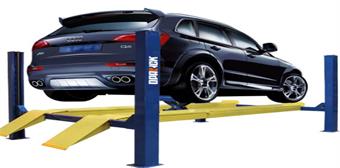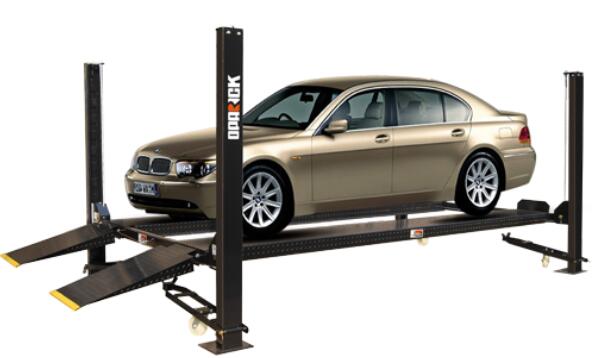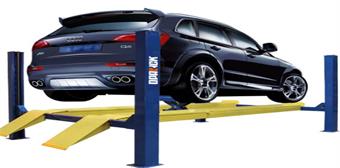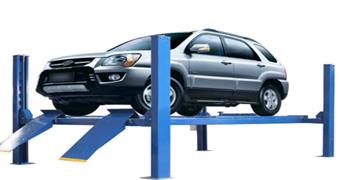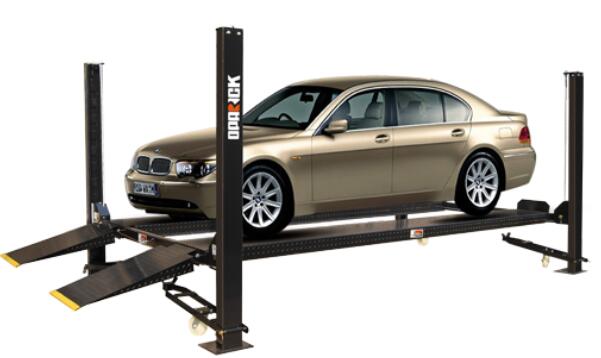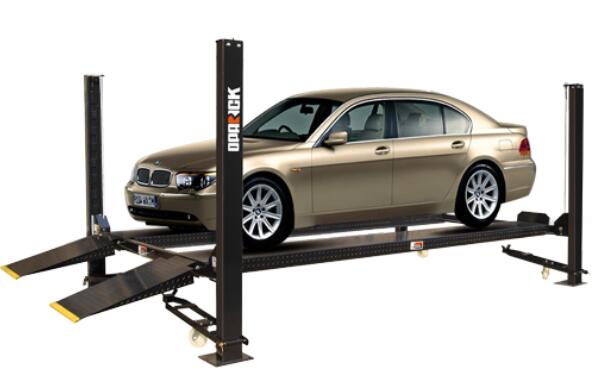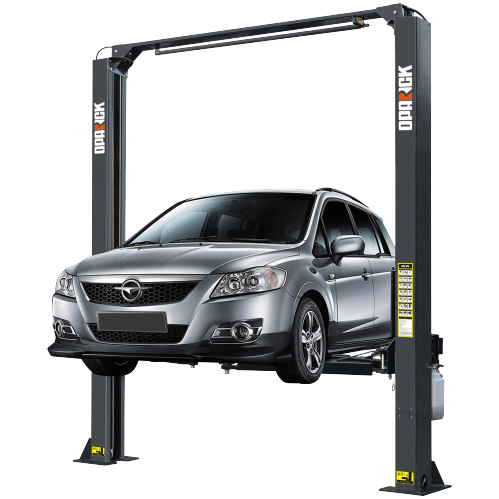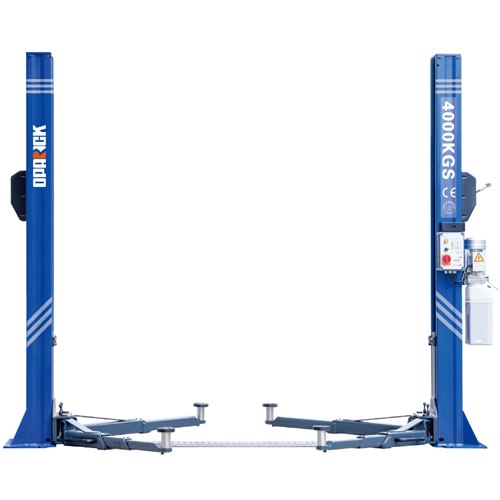Two Post Lifts: Hydraulic vs. Cable Synchronizatio
Lift manufacturers use two primary methods to synchronize two post car lift carriages and keep vehicles level from side-to-side, (1) mechanical cable/wire rope equalization, and (2) hydraulic synchronization. When lifting heavy trucks with uneven weight from side-to-side—such as those with cranes or welding units—all-hydraulic, direct-drive lifts are safer and more reliable.

Figure 1: Operating Manual – Cable Equalized Lift

Figure 2: Operating Manual – Cable Equalized Lift
Hydraulically synchronized lifts use all-hydraulic systems to ensure left and right lift carriages rise at equal speeds, even when side-to-side weight disparities on work trucks with cranes, welding units, etc. apply unequal pressure on the left and right posts. Comparatively, cable-driven lifts leverage cable tension to maintain equalization. These systems are less safe & reliable. Why? Because cable tension leads to cable-stretching & fraying, which can lead to out-of-level & uneven lifting if not monitored closely.
Manufacturers of cable-equalized lifts admit in their Operating Manuals that: (a) cables stretch and fray, (b) daily inspections are required to monitor the integrity of the cable, and (c) weekly or monthly maintenance is required to adjust cable tension to ensure the left and right carriages rise at equal speeds. [Figure 1]. What most customers don’t know, however, is that if one cable stretches, becomes loose, or is installed incorrectly, then opposing lift carriages won’t rise evenly, and locks won’t simultaneously engage [Figure 2].
Front-to-rear weight differences stress the lift’s structure by torqueing the carriages and loading the arms, while side-to-side weight differences stress both the lift’s structure (arms and carriage) and the lift’s equalization system. This is a critical safety consideration when servicing heavy-duty work trucks with welding units, cranes, etc. You may be surprised how quickly a F450 with 2,800lb, rear-mounted Welding Unit stretches and puts a cable-equalized lifting system out of sync (and wears down plastic slide blocks & cable sheaves).
Due to these shortcomings and safety hazards, many have concluded that cable-driven lifts are ill-equipped to service heavy-duty trucks with significant side-to-side & front-to-rear weight differences. A full hydraulic system—as opposed to a stretching and fraying wire rope / cable equalization system—will ensure a safer, more reliable, and longer-lasting lift.



